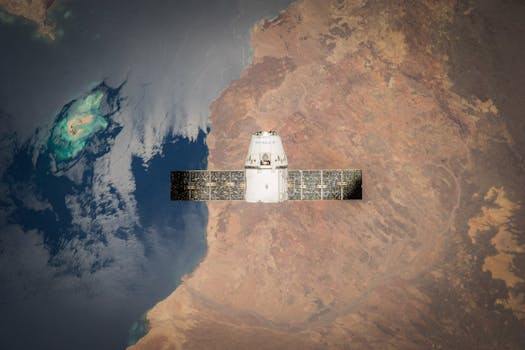Satellite Telecommunications 2023: Key Developments and What They Mean for the Industry
Satellite Telecommunications 2023 has been a remarkable year for the satellite telecommunications industry, with numerous breakthroughs and innovations that are transforming the way we communicate globally. Satellite Telecommunications 2023 is expected to play a crucial role in shaping the future of the industry, and it’s essential to understand the key developments that are driving this growth.
The increasing demand for global connectivity, driven by the rising need for remote work, online education, and social media, has created a vast opportunity for satellite telecommunications to bridge the digital divide. According to a report by MarketsandMarkets, the global satellite telecommunications market is projected to reach $7.8 billion by 2027, growing at a Compound Annual Growth Rate (CAGR) of 9.5% from 2022 to 2027.
Advancements in Satellite Technology

One of the significant developments in satellite telecommunications is the advancement in satellite technology. The launch of new satellite constellations, such as Starlink and OneWeb, has enabled faster and more reliable internet connectivity. These constellations are designed to provide low-latency, high-speed internet services to remote and underserved areas, making it possible for people to access the internet from anywhere in the world.
The development of new satellite technologies, such as phased array antennas and advanced propulsion systems, has also improved the efficiency and cost-effectiveness of satellite operations. These advancements have enabled satellite operators to launch more satellites, reducing the cost per satellite and increasing the overall capacity of the constellation.
Growing Demand for Satellite-Based Services

The demand for satellite-based services is growing rapidly, driven by the increasing need for global connectivity. Satellite telecommunications are being used in various industries, including maritime, aviation, and defense, to provide critical communication services. The use of satellite-based services is also increasing in the consumer sector, with the growing demand for satellite broadband and television services.
The development of new satellite-based services, such as satellite-based 5G networks and satellite-based IoT services, is also expected to drive growth in the industry. These services will enable the connection of billions of devices, including sensors, vehicles, and other IoT devices, to the internet, creating new opportunities for industries such as transportation, healthcare, and manufacturing.
Challenges and Opportunities

Despite the significant developments in satellite telecommunications, there are still challenges that need to be addressed. One of the major challenges is the issue of space debris, which poses a significant risk to satellite operations. The increasing number of satellites in orbit has created a growing concern about the potential for collisions and the impact of space debris on the environment.
Another challenge is the need for regulatory frameworks that can keep pace with the rapid development of satellite technologies. The lack of clear regulations and standards can create uncertainty and hinder the growth of the industry.
However, these challenges also present opportunities for innovation and growth. The development of new technologies and services, such as satellite-based debris removal and satellite-based regulatory compliance services, can create new opportunities for companies and entrepreneurs.
See more:

https://www.marketsandmarkets.com/
https://www.starlink.com/
https://www.oneweb.net/